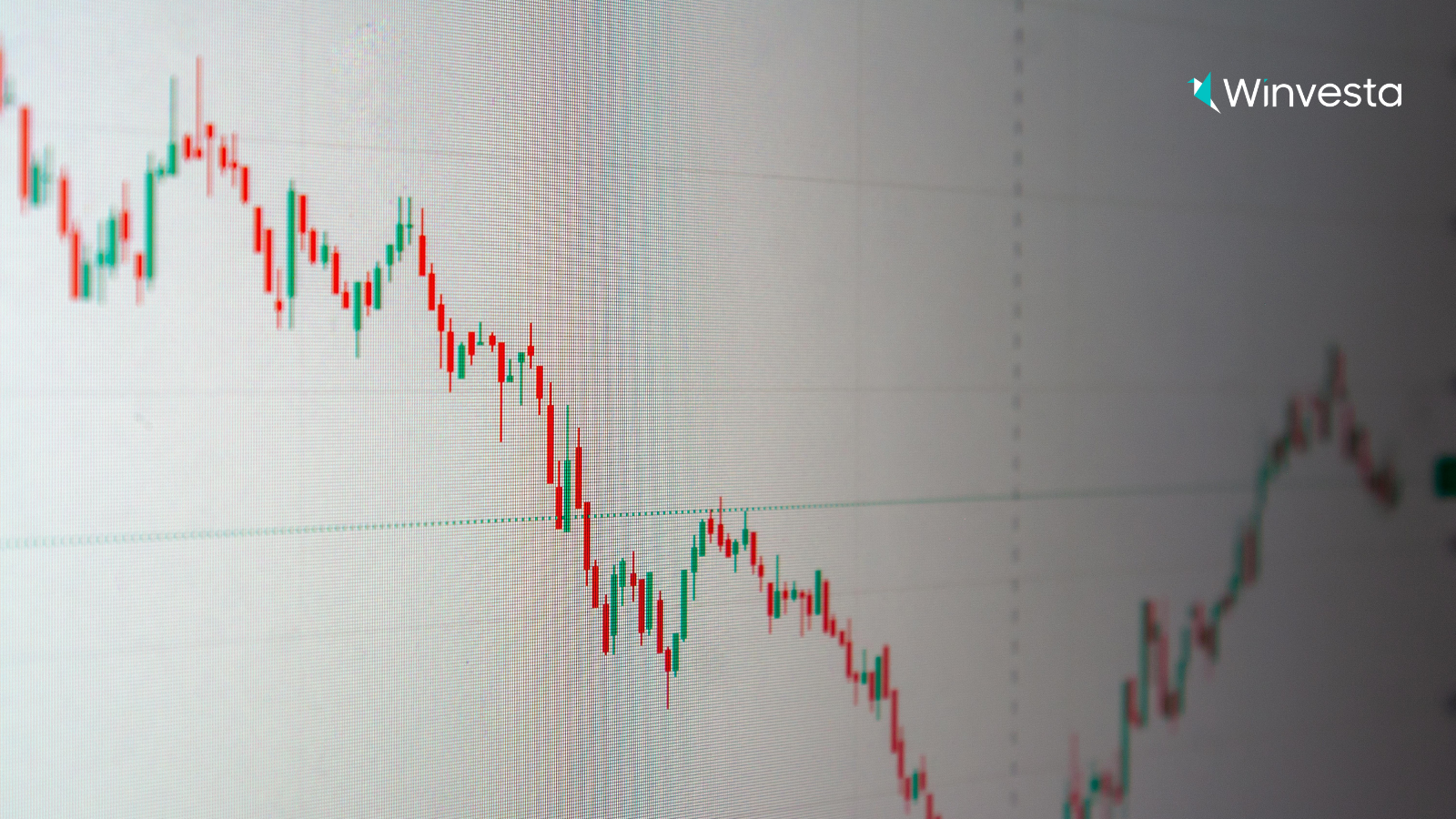Contents
Portfolio meaning and why diversification matters for every investor
6 minutes read
30 May 2025

Picture this: You put all your money into one company's stock. Everything goes well for months. Then suddenly, bad news hits, and your investment loses 50% of its value overnight. This scenario happens more often than you think.
This is exactly why smart investors never put all their eggs in one basket. They utilize a strategy called diversification to safeguard their investments and accumulate wealth over time.
What does portfolio mean in simple terms?
Your portfolio is like a collection of all your investments. Think of it as your investment toolbox. Just as a toolbox has various tools for different jobs, your portfolio should comprise different types of investments suited to different market conditions.
A portfolio can include:
- Stocks from different companies
- Bonds from governments or companies
- Gold or other precious metals
- Real estate investments
- International investments
The key is having variety. When one investment goes down, others might go up or stay stable.
Diversification meaning: your shield against market storms
Diversification is an investment strategy that spreads your money across different types of investments. The goal is simple: reduce risk while still earning good returns.
Here's how it works. When you diversify, you own investments that perform well at different times. If tech stocks crash, your gold investments might rise. If the Indian market struggles, your US investments could still grow.
Fund managers use math and experience to pick assets that don't move together. These are called "uncorrelated assets." When assets are uncorrelated, they don't rise and fall at the same time.
Understanding correlation in simple terms
Correlation measures how investments move together. It ranges from -100% to 100%.
- High correlation (close to 100%): Investments move in the same direction
- Negative correlation (close to -100%): When one goes up, the other goes down
- Zero correlation: Investments move independently
For example, Indian tech stocks and US tech stocks often have a high correlation. They tend to move together. But gold and stocks usually have a negative correlation. When stocks fall, investors often buy gold, pushing its price up.
The SMART investing framework for portfolio design
%20(20).png?width=1600&height=900&name=Blog%20images%20(2)%20(20).png)
Building a good portfolio seems complex. But you can use the SMART framework to make it simple. SMART stands for Safety, Market-linked, Alternative, Retirement, and Tax-saving investments.
This approach helps you create a modern portfolio that can handle different market conditions.
S - Safety: your financial foundation
Safety investments protect your money from big losses. These include:
Fixed deposits and bonds Indian investors keep about 30% of their money in savings accounts and fixed deposits. These offer steady returns and protect your principal amount. Investment-grade bonds can give slightly better returns than FDs.
When the RBI cuts interest rates, existing bonds often increase in value. This can give you capital gains on top of regular interest.
Gold investments Gold acts as insurance for your portfolio. It's accepted worldwide and stays relatively stable. Financial advisors often suggest keeping 5-10% of your portfolio in gold.
Gold works especially well during tough economic times. When inflation rises or stock markets crash, gold prices often go up. Gold ETFs make it easy to invest in gold without storing physical gold.
You can even invest in US-listed gold ETFs now. These have lower costs and no GST compared to Indian gold investments.
M - Market-linked investments: growth engines
Market-linked investments can be volatile short term. But they offer the best chance for long-term wealth creation.
Direct equity investments Stocks give you ownership in companies. When companies grow, their stock prices usually rise too. Indian markets offer about 5,000 listed companies to choose from.
International diversification Under the RBI's Liberalized Remittance Scheme, you can invest up to $2,50,000 per year in foreign markets. The US market alone has over 3,500 publicly traded companies.
US markets have beaten Indian markets over the past decade. Investing in US stocks also protects you from rupee weakness. If the rupee falls against the dollar, your US investments become more valuable in rupee terms.
Mutual funds for easy diversification Mutual funds pool money from many investors to buy a diversified basket of stocks or bonds. In FY19, 47% of new mutual fund investors were between 20-35 years old.
Mutual funds offer professional management and instant diversification. Even with small amounts, you can own pieces of hundreds of companies.
A - Alternative investments: beyond traditional options
Alternative investments don't move with stocks and bonds. This makes them great for diversification.
Real estate opportunities Real estate has always been popular in India. Foreign investors are now increasing their real estate investments in India due to better regulations.
You can invest in real estate through:
- Direct property purchases
- Real Estate Investment Trusts (REITs)
- Real estate mutual funds
Unlisted shares and private markets The over-the-counter (OTC) market for unlisted shares has grown significantly. These are company shares that don't trade on stock exchanges.
Private equity and venture capital offer access to companies before they go public. These investments can give high returns but require larger amounts and longer time commitments.
Commodities beyond gold Other commodities like silver, crude oil, and agricultural products can diversify your portfolio further. Commodity prices often move differently from stocks and bonds.
R - Retirement planning: securing your future
Most private sector employees in India don't get strong retirement benefits. This makes personal retirement planning crucial.
Provident fund benefits Both the Employee Provident Fund (EPF) and Public Provident Fund (PPF) offer tax-free returns. With falling interest rates, these guaranteed returns become more attractive.
PPF has a 15-year lock-in period but offers complete tax benefits. You get deductions on contributions, tax-free growth, and tax-free withdrawals.
Pension schemes National Pension System (NPS) offers market-linked returns with tax benefits. You can choose your fund manager and asset allocation based on your risk appetite.
T - Tax-efficient investing: keep more of what you earn
Smart tax planning increases your take-home income. This gives you more money to invest and compound over time.
Section 80C investments These include EPF, PPF, ELSS mutual funds, and life insurance premiums. You can claim up to ₹1.5 lakh in deductions under Section 80C.
Tax-efficient investment structures Long-term capital gains on equity investments above ₹1 lakh are taxed at 10%. This is lower than most people's income tax rates.
Debt mutual funds held for over 3 years get indexation benefits. This can significantly reduce your tax burden compared to fixed deposits.
Building your diversified portfolio step by step
Start with your goals and risk tolerance. A 25-year-old can take more risks than a 55-year-old nearing retirement.
Here's a simple approach:
- Emergency fund first: Keep 6 months of expenses in savings accounts or liquid funds
- Safety allocation: 20-40% in FDs, bonds, and gold, based on your age
- Growth allocation: 40-70% in equity investments (domestic and international)
- Alternative allocation: 5-15% in real estate, commodities, or other alternatives
- Regular review: Rebalance your portfolio every 6-12 months

Ready to own a piece of the world’s biggest brands?
- Invest in 4,000+ US stocks & ETFs
- Fractional investing
- Zero account opening fees
- Secure and seamless
Start investing in just 2 minutes!

Build your global portfolio.
.png)
Invest in companies you love, like Apple and Tesla.

Track, manage, and grow your investments.
Portfolio management made simple
Good portfolio management doesn't require daily monitoring. Focus on these key principles:
Asset allocation matters more than stock picking Research shows that 80-90% of portfolio returns come from asset allocation decisions. Picking the right mix of stocks, bonds, and alternatives matters more than finding the perfect individual stock.
Regular rebalancing When one asset class performs very well, it becomes a larger portion of your portfolio. Rebalancing means selling some winners and buying more of the underperformers to maintain your target allocation.
Stay disciplined during market volatility Emotions drive many investment mistakes. Having a written plan helps you stick to your strategy during market ups and downs.
Keep costs low High fees eat into your returns over time. Choose low-cost index funds and ETFs where possible. Every 1% in fees can reduce your wealth by 20-25% over 25 years.
Website and tools for portfolio design
Several online platforms can help you design and manage your portfolio:
Robo-advisors create diversified portfolios based on your risk profile and goals. They automatically rebalance your investments and can be perfect for beginners.
Portfolio tracking apps help you monitor all your investments in one place. They show your asset allocation and performance across different brokers and platforms.
Research platforms provide analysis on different investments and market trends. Use these to make informed decisions about your portfolio changes.
Remember, the best portfolio is one you can stick with through market ups and downs. Don't chase the latest investment fads or try to time the market perfectly.
Smart diversification across different asset classes, geographies, and time horizons gives you the best chance of reaching your financial goals. While finding completely uncorrelated assets is hard, spreading your investments across the SMART framework can significantly reduce your portfolio risk.
Your investment journey is unique to your goals, timeline, and risk tolerance. Start with the basics, keep learning, and gradually build a portfolio that can weather any market storm while growing your wealth over time. For detailed strategies on implementing these diversification principles, learn more about specific techniques to diversify your portfolio investments effectively.
Frequently asked questions about portfolio diversification?


Contributed by Denila Lobo
Denila is a content writer at Winvesta. She crafts clear, concise content on international payments, helping freelancers and businesses easily navigate global financial solutions.



